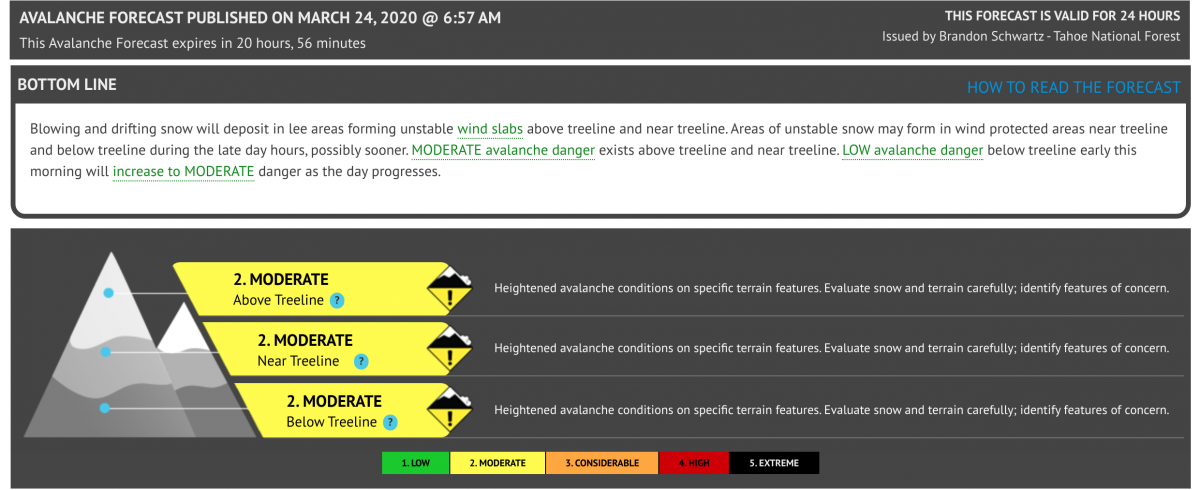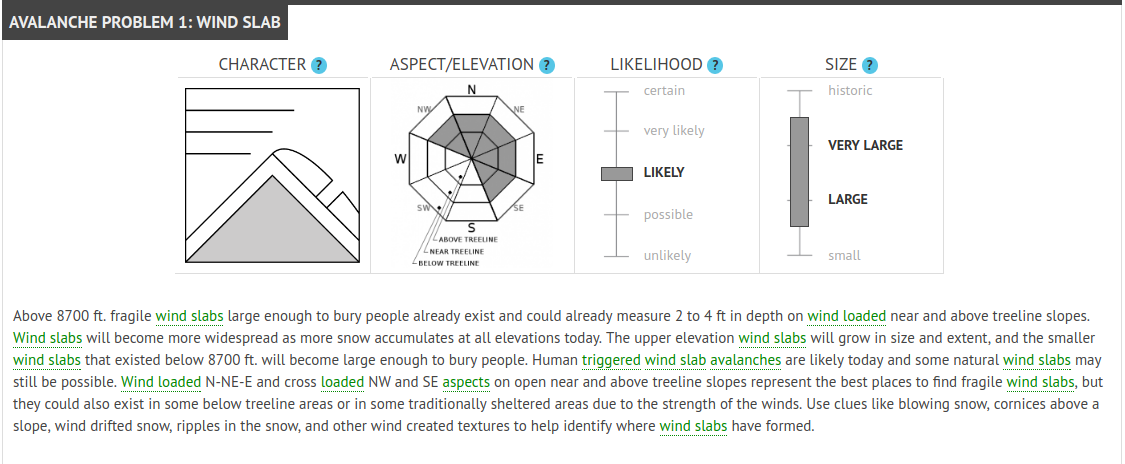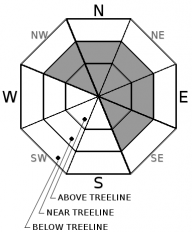
The avalanche advisory is designed for people who have taken at least an avalanche awareness class or preferably an avalanche Level 1 course. We don't expect a first time user to completely understand the contents of an advisory. This page explains the basic concepts of the advisory and how to read it.
The first section is the bottom line.

The Mountain Graphic
This graphic provides a general overview of the avalanche danger with a short paragraph on the "Bottom Line" information. This section may tell you whether you can safely walk your dog on a mountain trail or snowmobile on a mountain road. The rest of the advisory gives more specific avalanche information you will need for more specific trip planning decisions. For a tutorial on danger ratings click HERE.
Below this Bottom Line section, you will find the avalanche problems for the day. These have a series of symbols and graphics above a description to help explain the avalanche problem and help you remember it while making decisions in the field.

 |
Avalanche Character There are many different kinds of avalanches and each has its own characteristics. Most Level 1 avalanche classes cover these various avalanche problems. For a quick tutorial, click HERE. For each problem, we tell you both graphically and in text, where you will find the problem by aspect and elevation, the characteristics of the problem including how easy it is to trigger, its size and distribution, and whether or not it is becoming more or less dangerous. |
 |
The Aspect-Elevation Rose The aspect-elevation rose is a powerful way to understand the general avalanche pattern in a glance by aspect (the direction a slope faces) and elevation. These grey-and-white roses are what we call "locator roses" meaning that they show you the general aspect and elevation where you will MOST LIKELY find the avalanche problem, not all the places where you might find it. The grey areas indicate where this avalanche problem likely exists and the white areas indicate where it likely is absent. |
Likelihood of Triggering means the probability that a single person will trigger that type of avalanche in the terrain specified.
Size means the size of the avalanche. Small avalanches are D1 in size or not quite large enough to bury a person unless other factors like terrain traps contribute to magnify the consequences of the avalanche. Large avalanches are D2 avalanches meaning that they can bury or injury people. Very large avalanches are D3 avalanches that can bury and destroy a car, damage a truck, destroy a small building or break a few trees. Historic avalanches are D4 and D5 avalanches that can destroy a railway car, large truck, several buildings, a small village, or a forest area up to 40 hectares.
Following the avalanche problems section, there is a section that summarizes recent snow and avalanche observations. In the Recent Observations section, we have included an image slider that displays the videos, photos, and snowpits collected in the last 5 days. Below these observations is a brief Weather section including a short weather discussion, a summary of remote weather station data, and a mountain weather forecast.
Finally, remember this information is only for AVALANCHE TERRAIN, which is generally slopes steeper than 30 degrees (or flatter slopes locally connected to steeper terrain). Even on high danger days, you can find much safer terrain if you stay on slopes less steep than about 30 degrees that are not underneath steeper terrain.
















